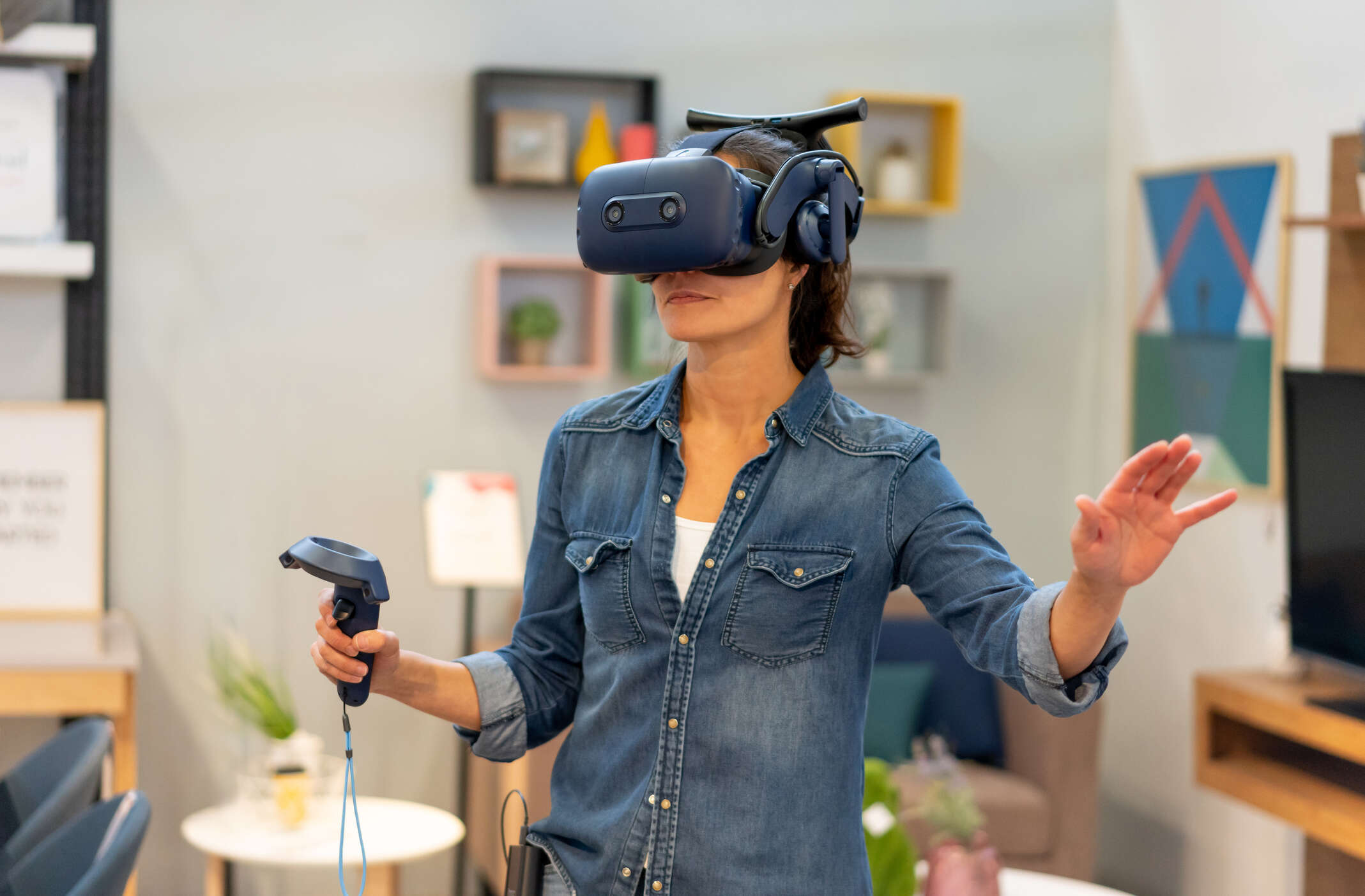
Remote or hybrid work has become a permanent fixture for many of us, but anyone who has suffered Zoom fatigue knows that today’s digital collaboration platforms have ample room for improvement.
The recent emergence of the concept of the ‘metaverse’ – a vision for the future of the web in which 3D virtual environments are linked together – has renewed interest in using virtual reality for collaboration.
There are some reasons to believe this might be more than just a gimmick, but widespread adoption is at least ten years away, experts say.

Metaverse collaboration: an end to Zoom fatigue?
Even before the pandemic, meetings were a sore spot for employees. In 2018, a survey of 2,000 workers found that they spent, on average, the equivalent of 23 days a year in meetings, the majority of which are unproductive.
During lockdown, the phenomenon known as ‘Zoom fatigue’ added to the misery of meetings. Last year, researchers at Stanford University identified four ways in which video conferences can be exhausting: they require excessive amounts of eye contact; looking at a picture of yourself is tiring; they restrict mobility and demand a high degree of concentration compared with face-to-face meetings.
A survey by web development agency Virtira found that 49% of workers experience a “high degree of exhaustion” from being required to be on camera during meetings.
Online meetings need to change, argues Tuong Nguyen, senior principal analyst in immersive technology at Gartner. “I have these meetings all day long,” he explains. “All I see is a grid of faces or names or icons or whatever people choose – they’re all disembodied voices. I don’t remember any of the meetings because they’re all the same to me.”
In-person meetings naturally have more stimuli, he continues. “I can say, ‘Claudia sat on my left on this meeting, and then we had another meeting at noon and she sat on my right. And then at the 3pm meeting she was actually presenting, and she was pacing a lot. Maybe she was nervous’,” he explains. “So now I remember them as distinct scenarios.”
Can meetings in the metaverse recreate this more engaging experience? Facebook founder Mark Zuckerberg thinks so. Last year, Meta – Facebook’s parent company – launched Horizon Workrooms, a collaboration application for its Oculus Rift virtual reality headset.
“Workrooms is a virtual meeting space where you and your colleagues can work better together from anywhere,” the company said. “You can join a meeting in VR as an avatar or dial into the virtual room from your computer by video call. You can use a huge virtual whiteboard to sketch out ideas together, bring your computer and keyboard into VR to work together with others, or just have expressive conversations that feel more like you’re together in person.”
Spatial audio for virtual reality meetings
The visual interface of these systems – in which colleagues are represented as 3D avatars is perhaps their defining characteristic – but Zuckerberg argues that the use of ‘spatial audio’, in which sound is manipulated to provide the sense of a 3D space, is one the most significant improvements on traditional online meetings.
“If someone’s talking from over there, it sounds like it’s talking from over there,” he said in an interview last year. “You can see the arm gestures and stuff, which feels more natural.”
Nguyen agrees. “With spatial audio, you can lean over to me, you can say something. Maybe this person hears us, can lean over, and join that conversation,” he says.
Reviews of Horizon Workrooms, which is still in beta, seem largely positive – “I say without hyperbole or exaggeration that our minds were blown,” says one – but these are mostly based on the experience of individual users or teams, not organisation-wide deployments.
And not everyone is convinced of the need for virtual meetings to be represented in 3D. “For most meetings I personally don’t care having the sensation of having met that person,” wrote VR blogger The Ghost Howls in their review. “I just want to [get] the job done.”
Working with 3D models
That changes, however, when the focus of the meeting is something – such as a product design, or architectural plans – that can be represented in 3D. In this case, virtual reality collaboration could be much more effective than a video conference, says Eve Weston, a writer and consultant on metaverse user experiences.
“When you’re together in VR, you can do things that may not be easy to do on a Zoom screen,” she explains. “If you’re architects or designers, somebody could be in New York, the other person could be in London, but the space that you’re decorating could be in Singapore.”
“You could walk around the room together and make decisions and comment on things in real time,” Weston says. “Not having to send swatches or share screens, just being in the place.”
Nguyen adds that 3D virtual meetings could accelerate the feedback process for visual designs – often tortuous over email or Zoom. “In the VR example, we take turns, it’s synchronous, it’s in parallel. It happens all at once, very much like an in-person meeting.”
Collaboration in the metaverse: technical limitations
Whatever its potential as a platform for collaboration, even the metaverse’s most high-profile booster acknowledges that there are technical limitations to be overcome. The visual fidelity of VR avatars is not yet up to the standard of video calls, Zuckerberg admitted in an interview – “but I think it’ll get there over the next few years”.
Weston contends that the absence of a sense of touch in 3D virtual environments means that typing or drawing might feel uncanny for many users. “We’re used the haptic feedback of the keyboard,” she explains.
Furthermore, some virtual reality users report a feeling a nausea or fatigue – known as VR sickness – after prolonged use. This suggests that swapping Zoom calls for VR hangouts would not alleviate the discomfort of multiple online meetings.
For these reasons, collaboration in 3D virtual environments is unlikely to become a mainstay of business life in the near future. “For the next ten years, this sort of vision will be more complimentary rather than replacing or displacing other forms of work,” Nguyen predicts.
That prediction might be familiar to anyone who has tracked the development of virtual reality in recent years. “That’s the in-joke of VR,” says Spike Laurie, partner at immersive content venture capital firm Hiro Capital. “It’s always been ten years away.”






